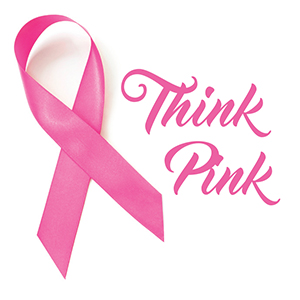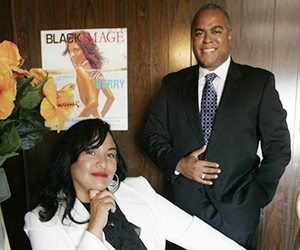Think Pink
October 10, 2016 by Las Vegas Black Image Magazine
Filed under Community
BY STEPHANIE KIRBY
It’s October! Our temperature is back to two digits, football has taken over the airwaves, Halloween decorations are out and retail stores are telling us to start thinking about Christmas. It is also the time of year when pink is prevalent. Very, very prevalent. Indulge me, if you will, while I share with why pink is so important to me.
If you have lost a loved one to breast cancer, raise your hand. If you have lost a coworker or someone in your church to breast cancer, raise your hand. If you have a friend who has lost someone to breast cancer, raise your hand. I imagine, at this point, every single person reading this article has a hand up. My hand is up. I lost my mom to breast cancer in 2016. I was naïve when she was diagnosed. I didn’t even know that she was uninsured. She received the mammogram that changed her life through a grant funded program offering mammograms to women without insurance. When the results came back, she was already a stage 3. I was naïve when she was in treatment. I continued to be naïve when she completed treatment, and was diagnosed a second time with a metastasis to her brain. And I was naïve when she died. I am no longer naïve when it comes to this disease. And I cannot stress enough how much I encourage everyone who is touched by breast cancer to arm themselves with as much knowledge as possible.
There are barriers when it comes to obtaining a mammogram. Regardless of the barrier, the result is the same — people are not getting screened. The biggest barrier is lack of health insurance. Even with programs designed to offer free or low-cost mammograms, the need often far outweighs the programs’ capabilities. But health insurance is just the top of a fairly lengthy list of potential barriers, which include: low income (or worry about cost), lack of access to care (such as lack of a local (or easy to get to) mammography center or lack of transportation to a mammography center, lack of a usual healthcare provider, lack of a recommendation from a provider to get mammography screening, lack of awareness of breast cancer risks and screening methods, lack of childcare, lack of sick leave or unable to miss work, fear of bad news or pain from the procedure, and cultural and language differences.
While it remains that African-American women are diagnosed slightly less often than Caucasian women, the mortality rate remains significantly higher, at 39%, than Caucasian women. Studies are showing a few things with regard to this statistic — including the fact that African-American women tend to wait longer to pursue additional testing when receiving an abnormal result from a mammogram. Additionally, African-American women tend to be diagnosed at a younger age than Caucasian women when, often times, the cancer is more aggressive. Further, African-American women are more commonly diagnosed with Triple Negative Breast Cancer than any other ethnic group and, unfortunately, TNBC tumors have a much poorer prognosis compared to other types of breast cancer.
Susan G. Komen was started in 1982 because of a promise one sister made to another to do all she could to end breast cancer forever. Komen has been working every day since then to end disparities, increase access to care, find the cures and provide support to those diagnosed with this disease along with their families. We have made significant progress. Much has changed in that time, but it is now time to do something big. Something bold. In September 2016, Susan G. Komen announced their bold goal which is to reduce the number of breast cancer deaths by 50% in the next decade. It is a huge statement with huge responsibility, but Komen is nothing but up to the challenge. One way we are going to achieve this goal is to specifically reduce breast cancer death rates among African- American women. The day after our bold goal was announced, Komen gathered philanthropic, civic, medical and business leaders in Washington, D.C. to formally launch the $27 million, 10-city initiative to reduce breast cancer death rates among African-American women. In addition to Komen CEO Judy Salerno, the event featured remarks from Robert F. Smith, president of the Fund II Foundation (the organization providing the grant for the Initiative). Joining Smith and Salerno were Jeri Lacks Whye, patient advocate and granddaughter of Henrietta Lacks, an African-American woman whose cancer cells were taken without her permission before her death in 1951 and used for research for decades, and Dr. Freda Lewis-Hall, chief medical officer and executive vice president of Pfizer. There is commitment here. There are brilliant minds at work here. There is hope…HERE.
So, yes, you will see a lot of pink. But we are More Than Pink. We are about saving lives. The color pink may help to catch people’s attention, but know that, for us, pink is strength, pink is power, pink is awareness… pink is life. Join us in being more than pink by making that mammography appointment for yourself or by driving a friend to her appointment. Be more than pink by being knowledgeable. Be more than pink by joining us for the 22nd Komen Las Vegas Race for the Cure on May 6, 2017. Be more than pink by being part of the solution.






